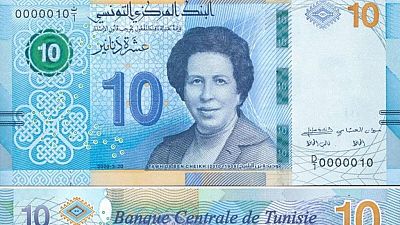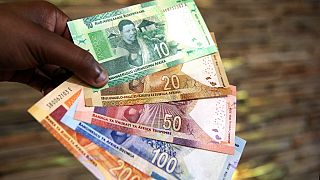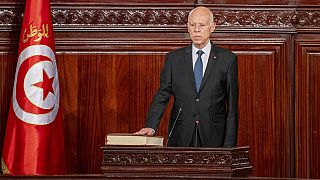Tunisia
Tunisia’s apex bank, Central Bank of Tunisia last Thursday, March 26, unveiled new banknotes honouring a female history maker in the country’s medical history.
The bank disclosed that the new 10 Tunisian dinar note would feature female doctor Tewhida ben Sheikh, the first woman to make it onto the country’s currency.
Ben Sheikh, born in 1909 passed on a decade ago, in 2010. She was the first Muslim woman to become a physician in North Africa in the 20th century, and is particularly renowned for her work in women’s health and specialization in gynaecology.
In 1928, she became the first woman to attain a high school baccalaureate and eventually specialized in gynaecology, heading campaigns around access ti contraception and abortion which precipitated the legalization of abortion in 1965.
The new note went into circulation on Friday, March 27, as legal tender. It will circulate alongside the country’s other currency. The country uses coins and banknotes. The dinar is subdivided into 1,000 milim or millimes.
Currently, there are coins of 5, 10, 20, 50 and 500 millimes and 1, 5 and 10 dinars in circulation. With respect to banknotes there are 5, 10, 20 and 50 dinars.
Tunisia honours first female doctor on banknote
Featuring on Tunisia’s 10 dinar bill is the late physician and gynaecologist Tawhida Ben Sheikh who was the country’s first female doctorREAD: https://t.co/e5zHNSLQGt pic.twitter.com/X2S2RYmxgx
— Middle East Monitor (@MiddleEastMnt) March 30, 2020
In a statement, the central bank said that the new note has several security features, including:
- A watermark through the image of Ben Sheikh and the number 10 that can be seen when looking at the note through light.
- A windowed security thread that appears continuous when looked at over a light, but discontinuous otherwise.
- A circle on the upper left corner containing the number 10 that changes color depending on the angle of view.
- Micro-text printing of “DIX DINARS” below the portrait of Ben Sheikh and in other places.
According to the Global Exchange website, the dinar was set out as the new currency in Tunisia in 1958, although it did not start to be used until 1960. Until that moment, the official currency had been the franc and the equivalence to the new currency was of 1,000 francs to 1 dinar.
The Tunisian dinar is commonly abbreviated DT, although the word “dinar” placed after the number is also accepted. Importing and exporting dinars is forbidden in Tunisia. Every year, each Tunisian is allowed to exchange up to 6,000 dinars in foreign currency before leaving the country.












01:00
Tunisia: French student detained for weeks, flies back home
Go to video
Nigeria’s army chief dies at 56
01:43
Democrats in Kenya fear what the next four years will hold, after Trump's U.S. election win
01:03
Uganda: Victims of lightning strike buried
11:07
The economy, the challenge of Kaïs Saïed's second term [Business Africa]
01:30
Saied's supporters gather in celebration ahead of official results